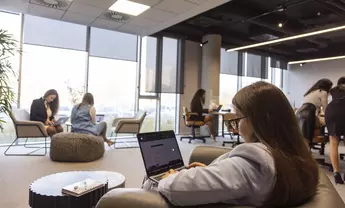The real risk to investing in overseas property
October 21, 2022
Dateline: Barcelona, Spain
Here’s a reality check: all investments carry some risk. Whether you’re in your home country or traveling the world to find investment opportunities, there is always risk.
I won’t deny it, every time I’m about to do a deal on something I’ve never done before, I get a little nervous. Any time you buy a property for the first time or venture into something new, it’s natural to feel a little apprehensive.
But if you want to be successful in this kind of business, you can’t let that hold you back.
I talk to people all the time who are looking for opportunities to get 15-20% annual returns on their investments. Now, you won’t find those levels of return in the United States, but the opportunities are out there — overseas.
Still, many see investing in overseas property as too risky. From my experience, it’s only a risk if you don’t know what’s involved.
Investments in overseas property can be one of the most secure investments you can make. Yes, you should be careful, hire professionals and not be a cheapskate, but foreign real estate can offer great returns with minimal risk.
To understand why, let me explain one of the most important aspects of foreign markets…
Inefficiencies are an advantage
There’s a reason you cannot get 20% returns on investments in the United States. The US is a technology and data driven market where you can know the exact price of everything from your car to your gold coins to your house.
Most countries aren’t like that.
In most parts of the world, there’s no such thing as Zillow making it so that everyone knows, to the exact dollar, what they should pay for a property.
There are inefficiencies in markets that haven’t worked themselves out yet, and those inefficiencies can work to your advantage.
For instance, there are numerous markets in the world with limited sources of capital where people need cash. Without access to easy loans and Zillow-like technology, they often choose to sell their property at a much lower price to have quick access to cash.
I’m buying a property right now where that’s the case. There are not a lot of buyers in the area and the property is not worth what the owners are asking, so I’ve been able to negotiate a much better price that will give me a much higher return.
The best deals come when you go where there are inefficiencies.
Furthermore, when you invest in overseas property you don’t just get the benefit of those market inefficiencies, you also have the advantage that most investors are so worried about risk that they pose no real threat, nor create any competition.
The one place where this isn’t always true is in Asia, where the Chinese are so sick and tired of the risk in their own country that they’re taking all their money and buying up properties throughout Southeast Asia. They see land going for $5,000 a meter in China, while property in Southeast Asia is going for $2,000 a meter and, of course, for them it’s a bargain. It’s the same for investors from Singapore.
Just another reason I’m moving away from Southeast Asia and on to places where I can make better deals on overseas property.
What’s really the risk?
I was talking to a contractor the other day who is looking into spending $100,000 in a country in the Caucasus region and he asked me if there really is a risk to such an investment.
To be honest, when investing in overseas property, the risk is really on your side. The risk is in being cheap and in not knowing what you’re doing. The risk isn’t that someone is going to take your $2,000 and rip you off.
Whether you spend the time on a project yourself or you go in and work with someone, just be smart about it and you can get access to good properties.
This is true, even in the US. I once bought a house in the US in a terribly depressed market and got it at an extremely low price. At the time, I was already doing deals overseas and this investment was my one thing in the US. While the property probably could have gone down more, I still did very well on that investment.
In the end, property — whether it’s a house or land — will always have some kind of value. The biggest risk is in you missing out and not having the right people to help you do things the right way.
If you are still worried about risk, one tip that I use and recommend is to hire people in the country where you are looking for overseas property investments to do a little research for you. I pay a set fee for the individual to do the research and give me reports on the best three properties they can find — none of which should be from English speaking websites.
This practice has gotten my prices to go from $1,200 a meter to $700 a meter. So far I’ve used this method in three countries and I’m now looking at some of those deals.
Where to go and what to buy when investing in overseas property
One last piece of advice for finding solid investments with great returns: farmland. I spoke about this the other day when we discussed the details of a good asset allocation strategy, but I can’t stress it enough, farmland is a great investment.
The value of farmland is increasing in countries all over the world. In the UK, agricultural property prices went up faster than London real estate, where prices are already through the roof — especially with all the Russian oligarchs who have rushed in to buy one hundred million dollar apartments.
Farmland in the UK went up 15%; in Poland the annual increase in value was 17%; in Romania, 14%; Bulgaria, 7%. Even in the US, farmland prices have gone up by 11%.
If you want high returns, find countries where this hasn’t happened yet.
The United States already has it all figured out. For investors who want high returns, you can’t go with safe countries where all the variables are known. Look to South America, Eastern Europe and even to Africa. Look for frontiers that no one is touching. It’s not as risky as you might suspect.


Is Land Investment Safer?
When American humorist and writer Mark Twain said, ’Buy land, they’re not making it anymore,’ he was definitely on to something. Land is finite, and that scarcity gives it lasting appeal. Yet, despite its obvious logic, land remains one of the most misunderstood investments. Many people are put off by its perceived complexity, potential legal […]
Read more

Top Emerging Market Economies for US Investors in 2025
If you’re still parking all your capital in overvalued US real estate or clinging to tech stocks in the S&P 500, you’re playing an old game while rivals are redesigning the board. The world has move on. Smart investors know that the biggest returns aren’t coming from Wall Street anymore – they’re coming from below-the-radar […]
Read more

Capital Gains Tax on Real Estate in the United States
For most people, buying a home is the single largest financial commitment they’ll ever make – and often, one of the most stressful. Yet, for many US citizens, home ownership remains a cornerstone of the American Dream. Whether it’s about financial security, independence or building generational wealth, millions strive to get on the first rung […]
Read more




